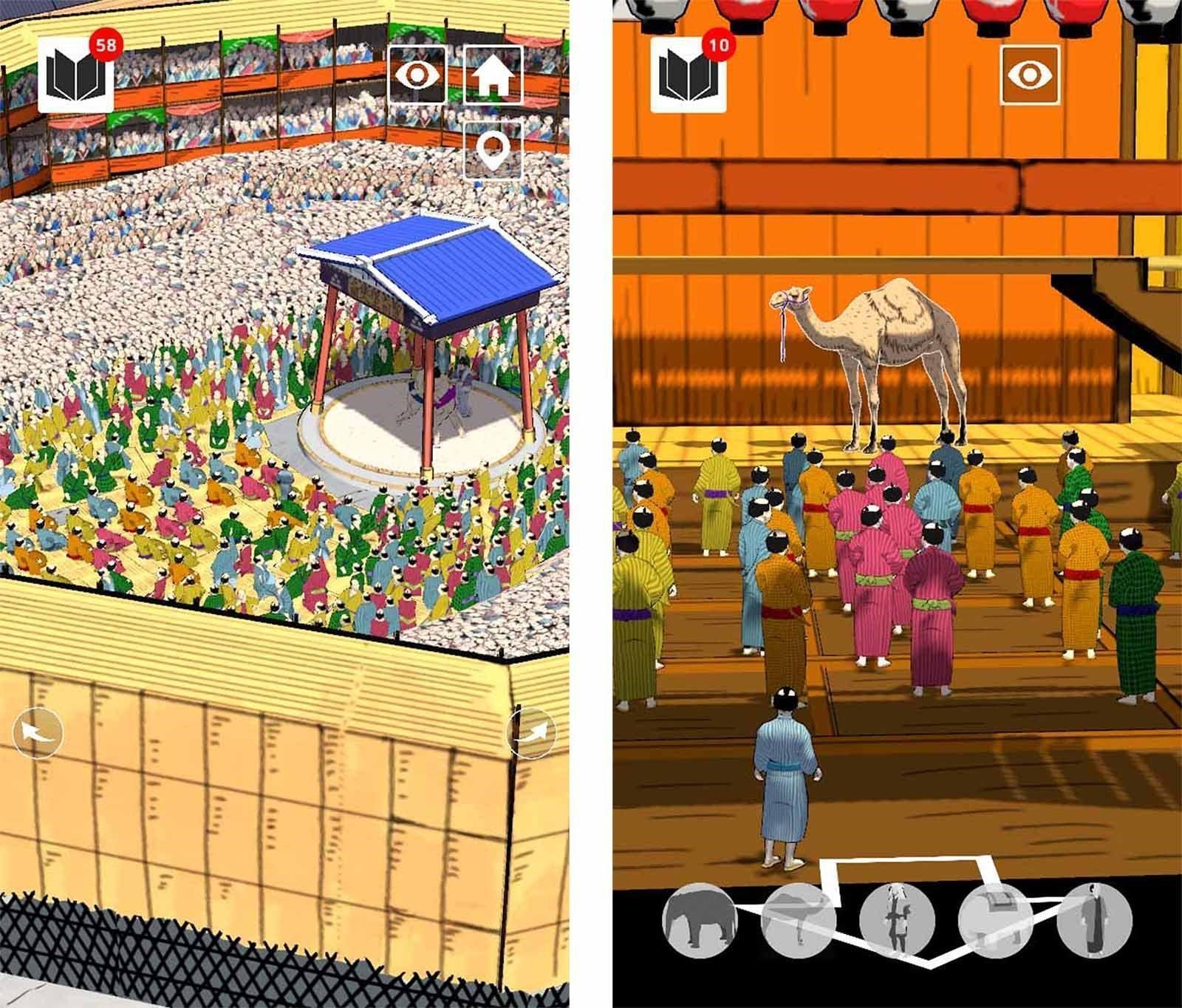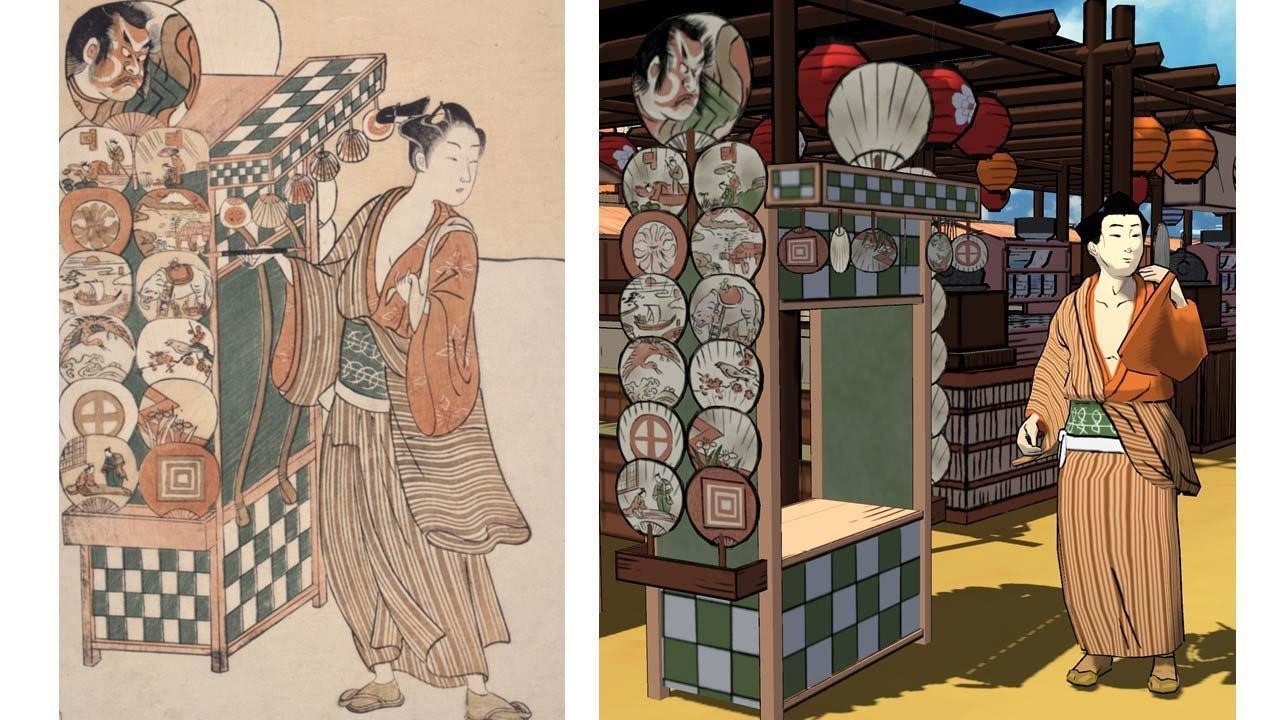Take a Virtual Tour of the Edo-Tokyo Museum
The Edo-Tokyo Museum has launched Hyper Edohaku, an app for interacting with the museum's collection and learning about the Edo period's history and culture.

Explore the City of Edo
The Edo-Tokyo Museum is currently closed for major renovations until the end of March 2026. In the meantime, there's Hyper Edohaku, an app developed to enable people to interact with the museum's collection and learn about the history and culture of Edo—the name for Tokyo during the period between 1603 and 1867, when Japan was ruled by the Tokugawa shogunate.
Hyper Edohaku was created in a joint effort between the Edo-Tokyo Museum and Rhino Studios, a game development company. The app is part of the Tokyo Smart Culture Project, an initiative that aims to create environments in which art and culture are available to anyone, anywhere, at all times. It's the first Japanese smartphone app offered by a museum to utilize a game engine.
Hyper Edohaku is designed so that users are able to learn about Japanese lifestyles and culture during the Edo Period, just by playing the app's game.
The theme of the game is Finding, Discovering and Collecting Edo. Users play as Edohakun, a boy who lives in Edo, and walk around exploring while collecting the 100 Edo-Tokyo Museum artifacts hidden throughout the city. An English version of the app is available, and the language setting in the Japanese version can be changed to English, as well.
One of the game's locations is the Ryogokubashi Bridge area of Edo. Its look and feel were recreated using the model of the west end of the bridge, which is part of the permanent Edo-Tokyo Museum exhibition, as well as various other ukiyo-e (Japanese woodblock prints) and historical materials.
The game is divided into four stages with four different settings: the nagaya (a traditional Japanese rowhouse), Ryogokubashi Bridge, Ekoin Temple and Sumida River. Users must find five to 10 items relevant to the theme of the area before they are able to move on to the next stage. After clearing all of the stages, users are free to move back through each one in search of the remaining items.

Haruki Shoko, the Edo-Tokyo Museum curator in charge of the planning and supervision of the app, said, "We recreated the city of Edo, as well as its people and their hairstyles and clothing, based on artifacts and historical materials from our exhibits."

Fun, Simple Descriptions Befitting a Game
The Edo-Tokyo Museum, which opened in 1993, currently houses about 370,000 artifacts. The 100 items featured in the game were selected from this enormous collection based on how well they would fit into the themes of its four areas and how interesting they would seem to the user at first glance.
One of the features the developers of the app struggled with, they said, were the descriptions for the artifacts. If these were descriptions for the special exhibitions in the actual museum, they could be very detailed. This is because the people who would come to these exhibitions would most likely already be interested in the works shown. But in coming up with the descriptions for the game's artifacts, it was important to make sure the content would be interesting to people with little prior knowledge about the artifacts. The descriptions would also have to be concise enough that people would not be tempted to skim through them.
Haruki explained, "We thought about what sorts of things users would be interested in, asking the game developers for their input, as well." The result? Descriptions that are entertaining and enjoyable for a wide range, including children, people from foreign countries, and others who might not know much about Edo history and culture.

Digitalization Opens Up a New World for Museums
Until now, museum-related digital content had mainly taken the form of 360-degree virtual reality (VR) experiences, based on 3D spatial scans or digital archives that allow people to view materials in museum exhibitions and/or collections online. The use of a game engine for Hyper Edohaku, however, has given the app the technical foundation for its future expansion into realms like the metaverse. Artifacts are now available not only as objects but also as data. This means, too, that the Edo-Tokyo Museum's resources can be used in schools and other educational environments in the form of a virtual museum visit.
"The Edo-Tokyo Museum is relatively well-known in Japan but virtually unknown overseas," Haruki said. "We're hoping this app will become a promotional tool that will boost the museum's recognition." Some users of the app, wanting to see the real-life version of an artifact featured in-game, might even want to visit the Edo-Tokyo Museum after it reopens.
The 3D digitization of these artifacts has opened up an entirely new world for museums, and for virtual visitors. Soon it might become even more common for people to be able to interact with historical materials and museum artifacts in games on computers and smartphones. "The world in the app is designed to feel very real," said Haruki. "For instance, some of the character movements are based on motion-captured footage of a traditional Japanese dance teacher. Even after you've collected all of the items, there's still so much more to see and explore in the town, which is what I think makes it so fun."

